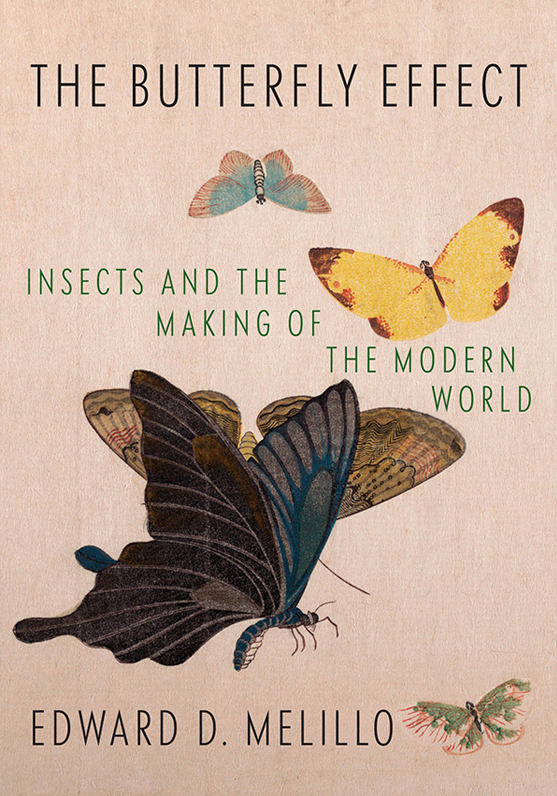
In our day-to-day lives, it can be easy to feel disconnected from the natural world. When surrounded by synthetic objects and materials, plastics and packaging, and processed foods and products, little thought is regularly given to exactly what something is made of or where it came from. Edward D. Melillo’s new book, “The Butterfly Effect: Insects and the Making of the Modern World” (2020, Alfred A. Knopf), brings light not only to many products and materials we come into contact with each day made by or of insects; but it also reveals a deeply connected history we share with the six-legged creatures among us.
With surprisingly beautiful prose and a painstaking amount of research, Melillo gives an in-depth look at both the science and the historical background of our close relationships to insects on a global scale. Diving into the ancient origins and cross-cultural significance of shellac, silk, and cochineal, the far-reaching spread of these materials is astonishing. Shellac, a secretion from the insect Kerria lacca, is not only a versatile coating for everything from furniture to produce, it was also used to create the first records, allowing us to hear and distribute musical recordings for the first time. Silk, dating back to 2640 B.C.E., is still very much a desired fabric today. Cochineal, produced by the crushed bodies of a bug by the same name, creates a brilliant and versatile red dye envied so much that an elaborate plot was carried out to discover and steal its secretive source.

It may be surprising, however, to learn just how much we continue to rely on these materials today. As Melillo notes: “when we bite into a shiny apple or enjoy a spoonful of strawberry yogurt, listen to the resonant notes of a Stradivarius violin or watch fashion models strut down a runway, receive a dental implant or get a manicure, we are mingling with the creations of insects.” Attempts to make synthetic substitutes for many insect-derived materials still falls short – at best, they aren’t as resilient, useful, or brilliant, and at worst, artificial versions can prove to be toxic.
Aside from the materials that surround us at any given moment and their make-up, many of the advances of our modern world are tied directly to the smallest creatures among us. Much of modern day genetic research has employed fruit flies for its discoveries, and our food production relies heavily on pollinators. Though our relationship with insects is one that is so closely dependent, we aren’t much endeared to them – humans frequently react to their presence with outright disgust. After discovering all of our connections and history involving insects, however, you may feel more inclined to view them with a bit more curiosity than revulsion. As Melillo states, “fear and awe are not so far apart on the human emotional spectrum as they so often seem…if we are willing to listen, our six-legged cousins give eloquent testimony about our plant’s diversity and the interdependence of its human and nonhuman histories.”
Check out “The Butterfly Effect” at your closest Denver Public Library location or as an ebook through denverlibrary.com.
Hannah Evans is the senior librarian at the Smiley Branch of the Denver Public Library.

Be the first to comment